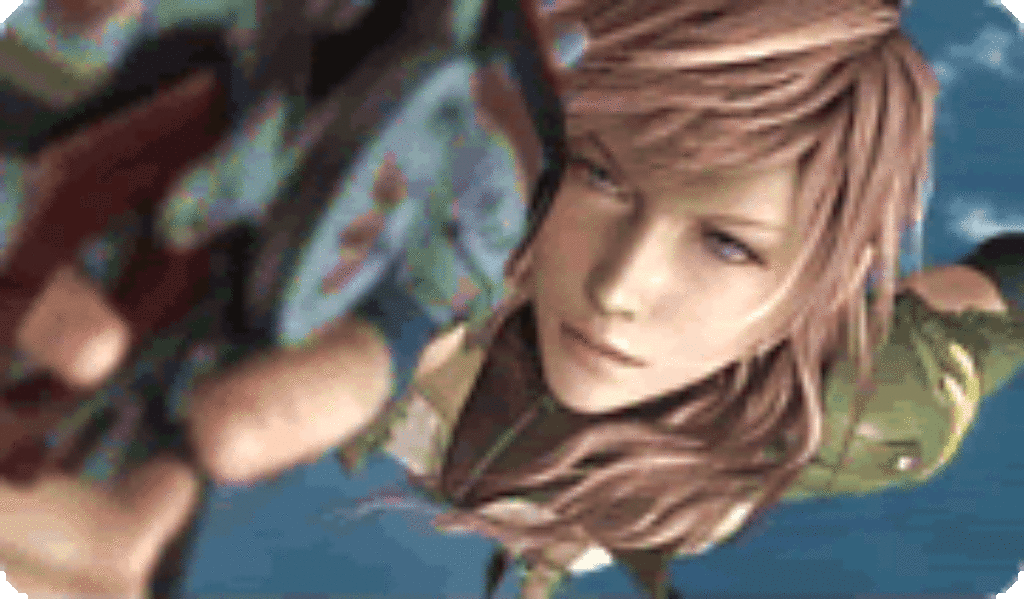
By now, most fans of Final Fantasy understand that the franchise isn’t accurately named. Because after 13 primary iterations (plus handfuls of spin-offs) stretching back to 1987, there’s very little finality to be found anywhere in this Japanese role-playing franchise that’s already sold 75 million copies.
Neither does it have any sort of rock-solid consistency. You can think of Final Fantasy like an experimental rock ‘n’ roll band that has an identifiable backbeat but plays around with a different vibe on every album. Final Fantasy XII, which came out in 2006, has a vaguely Dungeons & Dragons feel to it. Final Fantasy XIII camps out on the science fiction end of the fantasy spectrum. A bit of magic gets mingled into the proceedings, but mostly it’s about six characters caught up in a dramatic, futuristic civil war, with their fate hanging in the balance between two alien worlds.
During my first couple hours playing, I couldn’t shake two radically divergent impressions: This is the most beautiful game I’ve ever played … and maybe the most boring.
A Bolt of Lightning
Unlike most role-playing games where you spend those first two hours tweaking your character—making sure his nostrils are the right shape and his hair the right length—FFXIII plops you into the action with little preparation, explanation or even backstory. But I didn’t much care. Photorealistic animation ranks the opening moments of this game among the most compelling I’ve ever experienced. Cutting-edge production values definitely give George Lucas and James Cameron a run for their money—at least visually speaking.
A fantastic aerial monorail snakes its way through an eye-popping, roller-coaster journey, and we’re given breathtaking vistas of a city suspended in the sky. Soon, Lightning, a young woman being transported on the train, leads a rebellion against the Stormtrooper-like guards who’ve imprisoned her. In no time at all, there’s a horrific crash and a firefight that erupts between Lightning and a legion of her robot-like pursuers.
Lightning’s enemies, we learn, are the agents of a corrupt government controlling the spherical city of Cocoon. Constructed by a godlike race known as the fal’Cie, Cocoon offers an Eden-like sanctuary from the nightmarish world it floats above, Pulse.
So feared, so loathed is Pulse that any rumor of contact with the dark denizens of that place is enough to garner immediate deportation to that fearful realm. And it turns out that the government has seized the opportunity to expel anyone it wants—with plenty of unfortunate victims being massacred by its brutal PSICOM troops.
As players make their way through this intricate, gradually unfolding storyline, they’re introduced to six different characters determined to resist the so-called Purge and to rescue innocent citizens who’ve unjustly been sentenced to exile and death.
A Weakening Pulse
Epic storytelling has always been one of Final Fantasy’s calling cards—and FFXIII is no different. What is different this time is how streamlined the role-playing component of the game is. Whereas RPGs traditionally offer open-ended environments to explore and side quests to conquer if you’re looking for even more adventure, gameplay here is strictly linear.
There’s only one direction to go: forward. And there’s only one thing to do next: fight. The result is a sense of monotony that sets in pretty quickly. Amplifying those feelings is the fact that the battle system itself is equally simple—at least in the opening chapters of the story.
The game’s Active Battle System eventually enables you to cue up a variety of attacks and defensive capabilities for each hostile encounter. At first, however, the number of tactics at your characters’ disposal is quite limited. Dedicated gamers may come to think that the quality of the game ramps up as it progresses, but the number of hours required to get to that stage is huge. This is a seriously long game.
Not Quite a Conclusion
Third-person battles involve guns, missiles and fists. You don’t control the attacks so much as just push a button to launch offensive and defensive combos. (Vanquished enemies turn black and disappear.) The action is intense, falling solidly within the bounds of a typical T-rated game—which means there’s little blood or gore to be seen. Slightly more disturbing are occasional cutscenes involving bridges being destroyed and the sounds of screaming pedestrians plunging off of them. As for profanity, occasional utterances of “h‑‑‑,” “d‑‑n” and “a‑‑” can be heard.
Female characters wear outfits that reveal cleavage and lots of leg. One cutscene includes two ghost-like characters who don’t seem to be wearing any clothing. Another features the naked bodies of two women who’ve been turned to stone.
Along the way, we’re introduced to the idea that humanity was created by deity-like makers. Some are apparently good, others evil. Magical powers, used both offensively and defensively, become increasingly more important as you spend more time playing.
That brings us to the end of this review. But not, if history is any indicator, the end of the series.

After serving as an associate editor at NavPress’ Discipleship Journal and consulting editor for Current Thoughts and Trends, Adam now oversees the editing and publishing of Plugged In’s reviews as the site’s director. He and his wife, Jennifer, have three children. In their free time, the Holzes enjoy playing games, a variety of musical instruments, swimming and … watching movies.